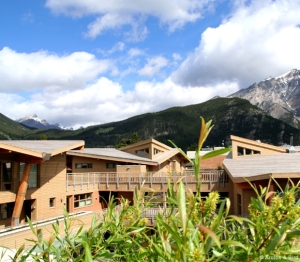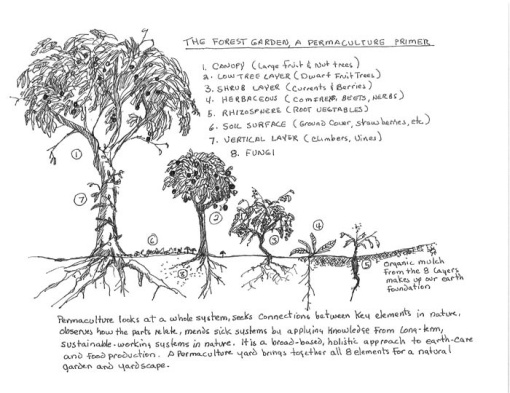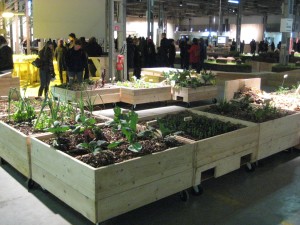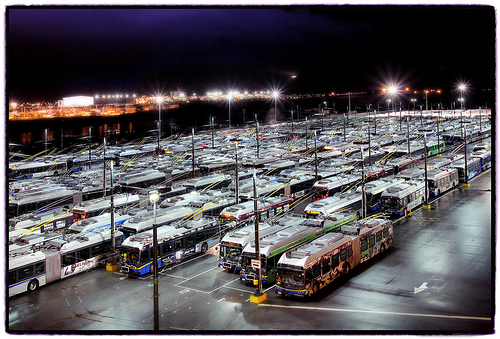I would like to touch on William McDonough’s Centennial Sermon, which spoke directly to my interests in green architecture—a career prospect that I am (in the process) of pursuing. McDonough is an internationally renowned designer and one of the primary proponents and shapers of what he and his partners call ‘The Next Industrial Revolution.’ McDonough emphasizes three defining characteristics that we can learn from natural design: everything that we have to work with is already here (material and waste cycling); solar energy is the only addition to this complex cycle; and the characteristic that sustains this complex and efficient system is biodiversity. What an exciting and challenging proposition! To design products and infrastructure for humans, that abides by nature’s standards and cycles. This sermon addresses how unhappy, stressed and unhealthy people have become working and living in man-made and nature-destructive landscapes. McDonough addresses three major types of products that we produce. The first type refers to “consumables” such as everyday foodstuffs, and items that we routinely throw away. This prospect sounds so simple, but the question I have to ask . . . how is this going to happen?
“Consumables should not be placed in landfills,
but put on the ground so that they restore the life,
health, and fertility of the soil. This means that shampoos
should be in bottles made of beets that are
biodegradable in your compost pile”.
McDonough also addresses products of service, such as appliances, vehicles, computers, etc.
“Products of service must continue
beyond their initial product life, be owned
by their manufacturers, and be designed for disassembly,
re-manufacture, and continuous re-use.”
And finally the “stuff” that nobody want to talk about, or simply can’t see at the time of purchase, such as nuclear waste and negative externalities placed on the environment:
“We are making products or subcomponents of
products that no one should buy, or, in many
cases, do not realize they are buying.”
Now I am left with another question to mull over: how do I live as an active member in society, in my work, school, and social activities with less stuff? Do I really need a computer? I think that I do in my given situation; however, would I be willing to pay more to purchase a biodegradable laptop, with recycled parts, and no toxic components? No laptops on the market exist, but they should, as addressed by McDonough in his sermon. Smart industrial design, product design, and building design = design that fits within nature’s expectations, not our own. I’ve been pondering ethical consumerism lately, leading me to believe that we are beginning to see a trend emerging, most prevalently in the cocoa and coffee trades. Is it ethical to purchase goods, especially cheap plastic goods, made by factory workers in China? Ethical consumerism is one step in the cradle to cradle perspective of product life cycle; smart design and ethical and efficient break-down and reuse of the product, complete the circle. How much happier might we be if we could reconnect with nature, and learn to live more simply? If we were forced to live in a small room with everything that we bought, and waste was never allowed to leave the room—I think we would all readdress what we really need.
 The conceptual design for the revitalization of the historic River Rouge complex (Michigan, USA). This plan celebrates the integration of industry and nature.
The conceptual design for the revitalization of the historic River Rouge complex (Michigan, USA). This plan celebrates the integration of industry and nature.

The Bison Courtyard in Banff, Alberta. This LEED gold development was designed by William McDonough + Partners, Design Architects. It is an example of ecologically responsible design and development utilizing folding rooflines to echo the profiles of the surrounding glacial peaks. The reason I have included this development in particular is because I worked at the Bison Bistro, a beautiful restaurant specializing in “rocky mountain slow food”. I was surprised to learn that McDonough designed this complex.
References
McDonough, W. 1993. Design, Ecology, Ethics and the Making of Things. A Centennial Sermon. New York: The Cathedral of St. John the Divine. 9 pp. Available on-line at http://www.mcdonough.com/Sermon.pdf
Mayell, H. (2004). As Consumerism Spreads, Earth Suffers, Study Says. National Geographic News. Retrieved March 2010 from: http://news.nationalgeographic.com/news/2004/01/0111_040112_consumerism.html











